Peeling skin on the feet is typically a sign of dry skin. This is common in people who do not regularly moisturize their feet and in people who frequently use open-toe footwear, like flip-flops. Peeling skin can be a sign of other conditions, however, like an infection, eczema or even psoriasis.
Therefore, if you notice that the peeling is very intense and does not improve with moisturizing, or if you notice other symptoms like pain, itchiness, redness or swelling, you should see your family doctor or dermatologist. The doctor can identify the possible cause and initiate treatment as necessary.
What causes skin on the feet to peel?
The main reasons your foot skin can peel are:
1. Dry skin
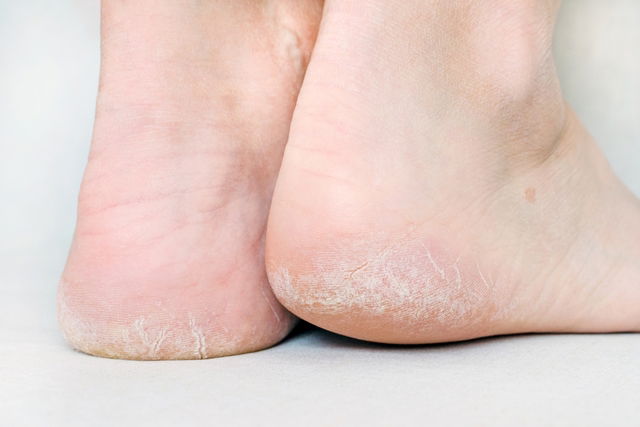
The foot is one of the parts of the body that is most prone to developing dry skin. This is because the foot is constantly withstanding the pressure of body weight, which makes blood circulation slower and leads to less hydration of the skin. Dry skin on the feet can be worse in people who stand for prolonged periods, who wear tight shoes, or who frequently wear slides, flip-flops or high heels.
What to do: The best way to hydrate the skin is to apply moisturizer to the feet every day after showering. In addition, you should avoid certain footwear (e.g. tight shoes, flip-flops or high heels) to relieve any additional pressure on the foot, as this can help restore optimal circulation.
Learn more about how to treat cracked heels using our recommended foot care routine.
2. Burn
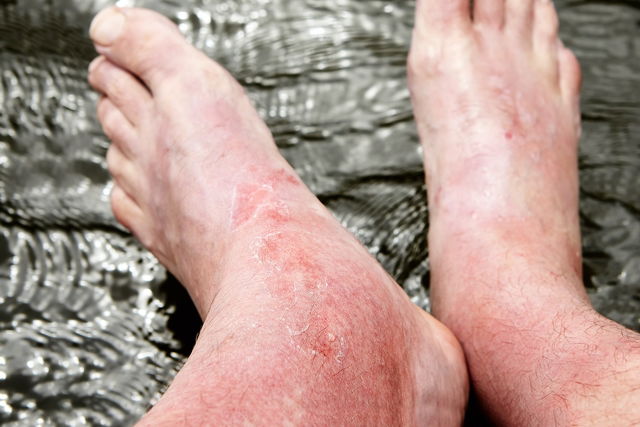
Another common cause of peeling feet is a burn, particularly a sun burn. Many people forget to apply sunscreen to the feet and will leave the house in light shoes that allow the feet to be exposed to the sun’s rays.
Walking barefoot in hot sand or on a hot floor can also burn the skin on the feet. This burn can become red and slightly painful before peeling a few days later.
What to do: To treat a burn, it is important to cool off the skin, particularly within the first few hours of the burn. You should soak your feet in cool water for 10 to 15 minutes and apply cold compresses with chamomile tea. It is important to apply moisturizer every day to decrease chances of peeling.
3. Athlete’s foot
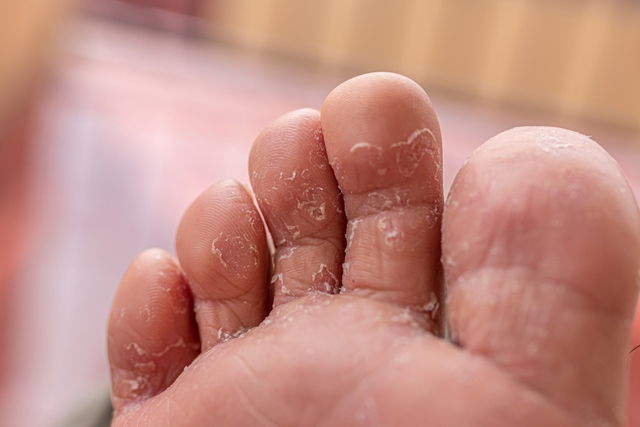
Athlete’s foot is a fungal infection that affects the feet. It is a relatively common condition, given the foot is an area that can sweat profusely throughout the day.
This type of skin infection is more frequent in people who use closed shoes, as the sweat is more prone to sweating and becoming hot, which are perfect conditions for the growth of fungus. You can also get athlete’s foot by walking around barefoot in public places, like pools and locker rooms.
The growth of fungus on the feet and between the toes can lead to skin peeling, as well as itching and foul odor.
What to do: To treat a fungal infection, it is important to keep the skin dry and clean. Be sure to thoroughly dry off your feet after showering, particularly between your toes. Walking around barefoot or with open-toe shoes can also help to air-out your feet and prevent further growth of fungus. If your symptoms do not improve, however, you should see your doctor or dermatologist, as treatment with antifungal ointments may be necessary.
4. Eczema
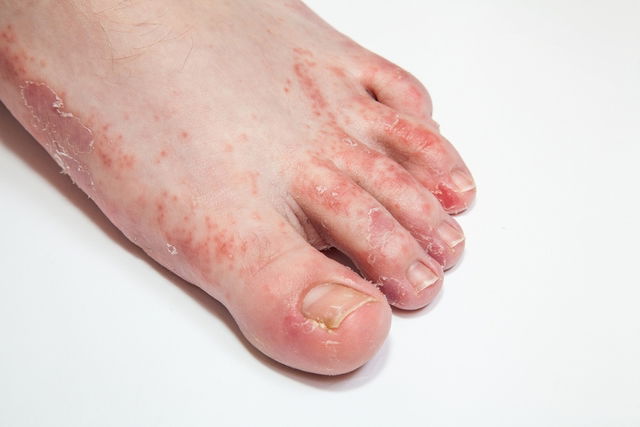
Eczema is a common skin problem that is characterized by persistent inflammation that leads to itching, redness and skin peeling. It usually emerges after being in direct contact with a specific material, like synthetic fabrics or enamel. It can also happen with use of certain medications, however it can easily happen for no obvious reason.
Eczema symptoms usually occur as flare-ups that can improve for a while and come back days to months later. Learn more about the symptoms of eczema and what can trigger it.
What to do: In some cases, eczema can resolve on its own within a few hours or days, depending on the cause. Nonetheless, if symptoms are persistent, you should seek a dermatological assessment to identify the cause and evaluate the intensity of your symptoms. Treatment may include the use of anti-inflammatories and/or corticosteroids.
5. Psoriasis
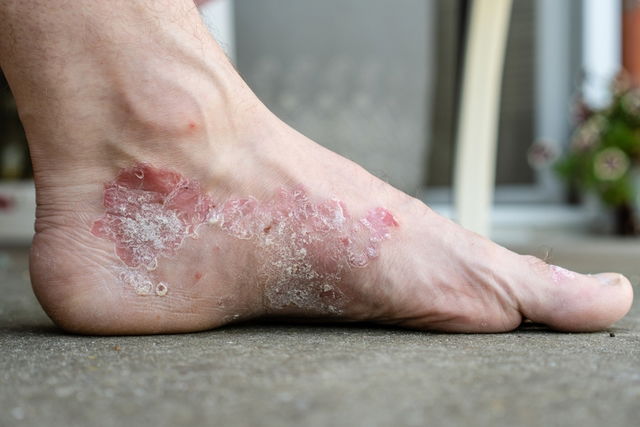
Psoriasis is another skin condition that is relatively common. It is characterized by the appearance of red spots on the skin that peel and may or may not be itchy. These spots or plaques can appear anywhere on the body or affect just one spot, like the elbows, scalp or feet.
Psoriasis is a chronic illness caused by changes to your immune system. It is common for people to have psoriasis several times throughout their lifetime. Flare-ups are particularly prone to happen during stressful periods, when the body is fighting an infection, or during the winter. Get a better understanding of the symptoms and causes of psoriasis by reading more about it.
What to do: If you suspect you have psoriasis, you should seek a dermatological assessment. Although this condition does not have a cure, there are treatments available that can decrease symptom intensity, like corticosteroid use, light therapy and immunosuppressant medication. Learn more about how a psoriasis diet can also help to relieve symptoms and prevent flare-ups.
